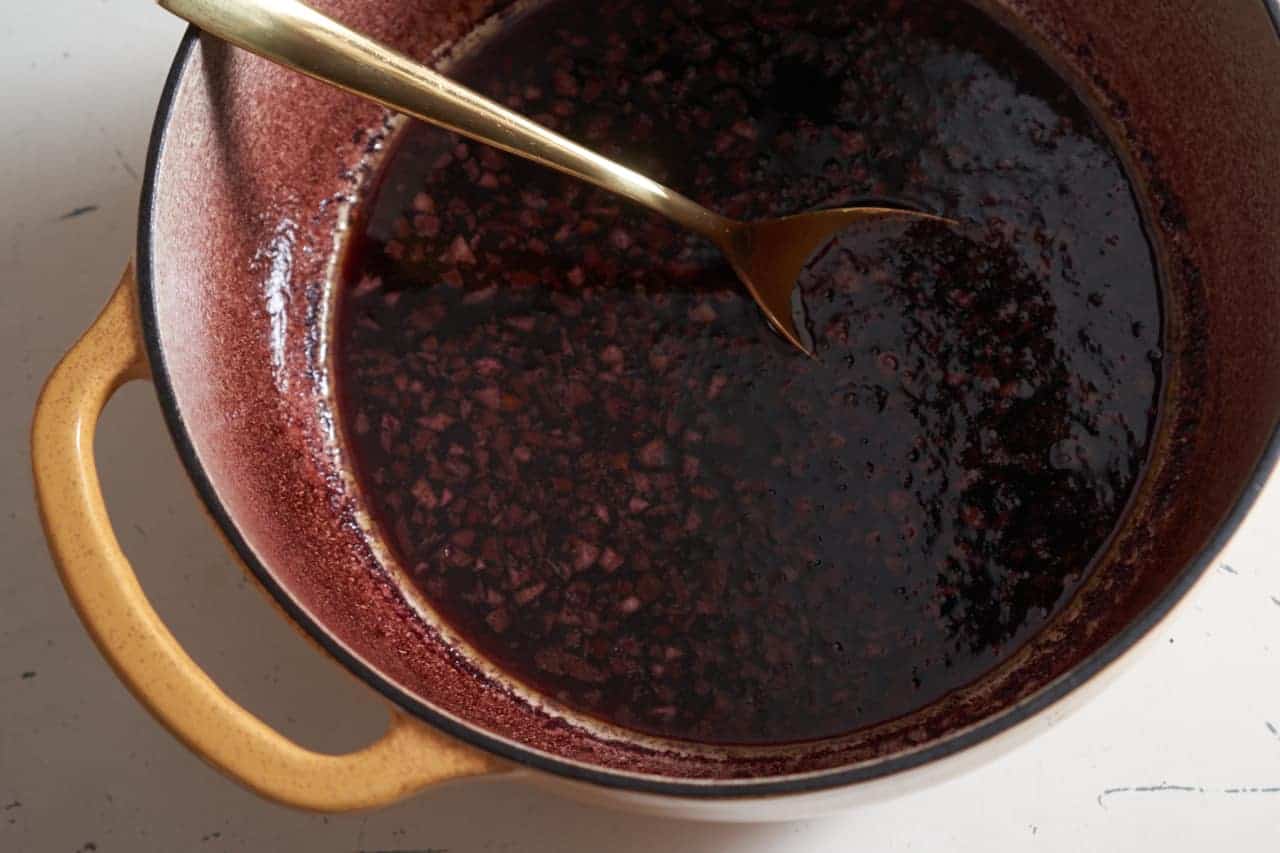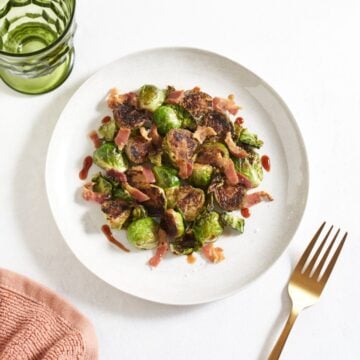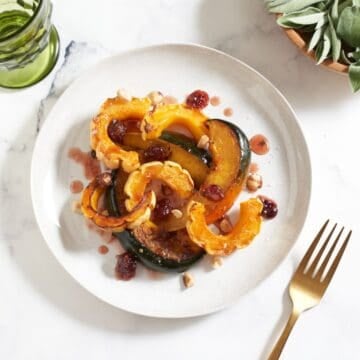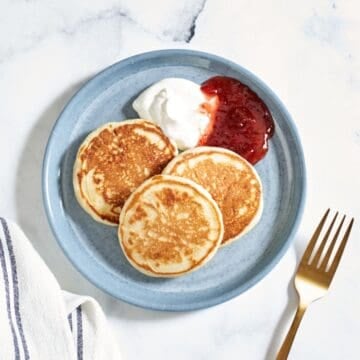Have questions about cooking with wine? It's nothing to be afraid of! I'll explain why you should cook with it and the different methods involved. You'll be using this ingredient like a world-class chef in no time!

I love to cook with wine! It's a seemingly fancy, but actually simple way to add depth of flavor, acidity, and aroma to dishes, whether you're braising beef or making a pasta recipe.
You can cook with red wine, white wine, rosé, and even sparkling wine, depending on the ingredients you're working with and the season.
Jump to:
Why cook with wine?
Wine adds acidity which tenderizes meat in braises, soups and stews, and helps lock in moisture in lighter, quick cooking dishes like seafood recipes. Adding wine to asparagus risotto breaks down the rice a little, so all the flavors can be absorbed into it. It also adds lovely aroma and of course, flavor to anything you're cooking!
Always cook with a wine you would drink
You don't have to cook with an expensive wine, but use one you would want to drink. Remember, this is all about flavor. If it doesn't taste good to you right out of the bottle, it certainly isn't going to taste good in your recipe!
Methods to use when cooking with wine
- Braising: Braising means slowly cooking meat over lower heat in a liquid, but the meat is not fully submerged, about ⅓ of it is above the liquid. Add wine to meat or vegetable stocks along with other aromatics when using it to braise.
- Deglazing: This is a fun, slightly flashy way to use wine, but it just means you're adding it to the pan to get all the bits off the bottom to flavor a sauce. I use this technique to make Pan Seared Lamb Chops, white wine helps to get the fond off the bottom of the pan and flavors the garlic butter sauce.
- Sauces: Whether it's long-simmering sauces or a quick pan sauce, both red and white wine can add complexity and aroma.
- Steaming: Add wine to your steaming liquid to impart flavor and lock in moisture.
- Stewing: Many classic stews are made with wine because it tenderizes the meat as it simmers, turning simple ingredients into luxurious meals.
Want to save this recipe?
You'll join hundreds of readers on my email list!
Which wine should you cook with?
Use lighter, drier wines, as the flavor and viscosity will intensify the longer the dish cooks. Fuller bodied, sweeter wines tend to get too syrupy. Avoid wines with oak like Cabernet and Chardonnay, because the oak can turn into a bitter note as the wine cooks down.
- Red wine: Often added to tomato sauce or other long-simmering recipes, red wine delivers big flavors. Try a Chianti, Tempranillo, or Beaujolais.
- White wine: Great for making pan sauces, my favorite white wines to cook with are Pinot Grigio and Sauvignon Blanc.
- Rosé: When using rosé, keep in mind that it will add a bit of color and choose a dry rose, not a sweet one.
- Sparkling wine: Use in cake batter or other baked goods like strawberry scones for added lift, but be sure to adjust your other leaveners to compensate.
- Port or sherry: These wines can be used in reductions to serve with steak or grilled pork.
Recipes with red wine
- Red Wine Pasta
- Red Wine Braised Short Ribs
- Chicken Thighs in Red Wine with Dried Plums
- Braised Lamb Shanks in Red Wine
Recipes with white wine
- Pork Stew with White Wine and Sage
- Chicken Thighs with Mushrooms and White Wine
- Salmon with White Wine, Peas, and Radishes
- Mussels in White Wine Sauce
- Pea Risotto
- Easy Shrimp Scampi Recipe
FAQ
It depends on the cooking method. The longer the dish cooks, the more the alcohol dissipates, but you should never count on it being 100% free of alcohol. If you are cooking for children or guests who abstain from alcohol, leave the wine out and replace it with water or stock.
NO! Don't buy cooking wine. It's terrible and really not wine at all, it's filled with additives and flavorings. The point of using wine in a recipe is to add great flavor and aroma. Cooking wine does neither of these things, so use the real stuff.






Leave a Reply